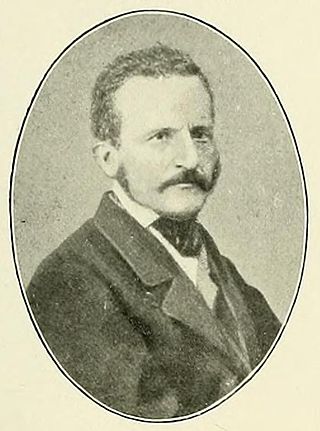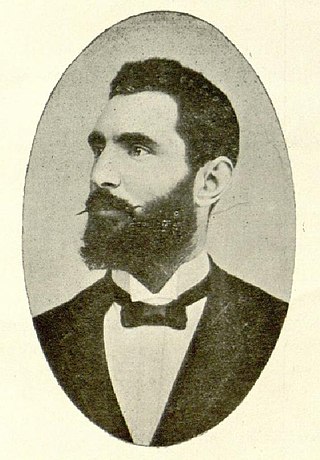William Botting Hemsley was an English botanist and 1909 Victoria Medal of Honour recipient. The standard author abbreviation Hemsl. is used to indicate this person as the author when citing a botanical name.

Pier Andrea Saccardo was an Italian botanist and mycologist. He was also the author of a color classification system that he called Chromotaxia. He was elected to the Linnean Society in 1916 as a foreign member. His multi-volume Sylloge Fungorum was one of the first attempts to produce a comprehensive treatise on the fungi which made use of the spore-bearing structures for classification.

Mordecai Cubitt Cooke was an English botanist and mycologist who was, at various points, a London schoolteacher, a Kew mycologist, curator at the India Museum, journalist and author. Cooke was the elder brother of the art-education reformer Ebenezer Cooke (1837–1913) and father of the book illustrator and watercolour painter William Cubitt Cooke (1866–1951).

Giacomo Bresadola 14 February 1847 – Trento 9 June 1929) was an eminent Italian mycologist. Fungi he named include the deadly Lepiota helveola and Inocybe patouillardii, though the latter is now known as Inosperma erubescens as this latter description predated Bresadola's by a year. He was a founding member of the Société mycologique de France.
Alessandro Trotter ) was an Italian botanist and entomologist who pioneered in cecidology, the study of plant galls.
Giuseppe Gibelli was an Italian botanist and lichenologist who was a native of Santa Cristina e Bissone.
Bangia is an extant genus of division Rhodophyta that grows in marine or freshwater habitats. Bangia has small thalli with rapid growth and high reproductive output, and exhibits behavior characteristic of r-selected species. The plants are attached by down-growing rhizoids, usually in dense purple-black to rust-colored clumps. The chloroplasts of Bangia, like others in the division Rhodophyta, contain chlorophyll a and sometimes chlorophyll d, as well as accessory pigments such as phycobilin pigments and xanthophylls. Depending on the relative proportions of these pigments and the light conditions, the overall color of the plant can range from green to red to purple to grey; however, the red pigment, phycoerythrin, is usually dominant.
Paul Sydow was a German mycologist and lichenologist, father of Hans Sydow (1879–1946).

Carlo Luigi Spegazzini, in Spanish Carlos Luis Spegazzini, was an Italian-born Argentinian botanist and mycologist.
Benjamin Matlack Everhart was an American mycologist from West Chester, Pennsylvania.

Holwaya is a genus of fungi in the family Bulgariaceae. Holwaya is monotypic, containing the single species Holwaya mucida, which was originally named Bulgaria ophiobolus by Job Bicknell Ellis in 1883, and later transferred to the newly created Holwaya by Pier Andrea Saccardo in 1889. The genus name of Holwaya is in honour of Edward Willet Dorland Holway (1853-1923), who was an American botanist (Mycology) and Banker.
Ernst Johann Lemmermann was a German botanist who specialized in the field of phycology.
Albert Julius Otto Penzig, also referred to as Albertus Giulio Ottone Penzig was a German mycologist.

Giuseppe De Notaris was an Italian botanist generally known for his work with cryptogams native to Italy.

Giovanni Battista Traverso (1878-1959) was a mycologist and plant pathologist on the early 20th-century.
Paul Dietel was a German mycologist.

Giuseppe Cuboni was an Italian botanist and agronomist, known for his pioneer work in the field of plant pathology.

Augusto Napoleone Berlese was an Italian botanist and mycologist. He was the brother of entomologist Antonio Berlese 1863–1927, with whom he founded the journal Rivista di patologia vegetale in 1892. Together with Francesco Saccardo and Casimir Roumeguère he edited the exsiccata Fungi Lusitanici a Cl. Moller lecti. Contributiones ad Floram Mycologicam Lusitaniae.
William Albert Setchell was an American botanist and marine phycologist who taught at the University of California, Berkeley, where he headed the Botany Department. Among his publications are the Phycotheca Boreali-Americana, a multi-volume specimen collection of dried algae, and the Algae of Northwestern America, a reference work.
Detonula is a genus of diatoms belonging to the family Thalassiosiraceae.









